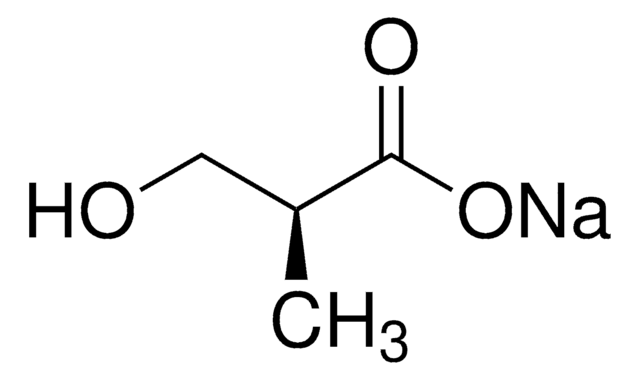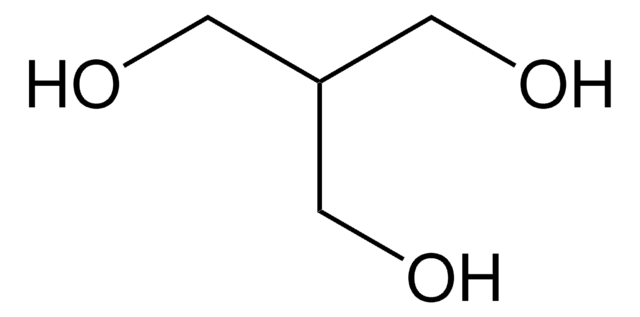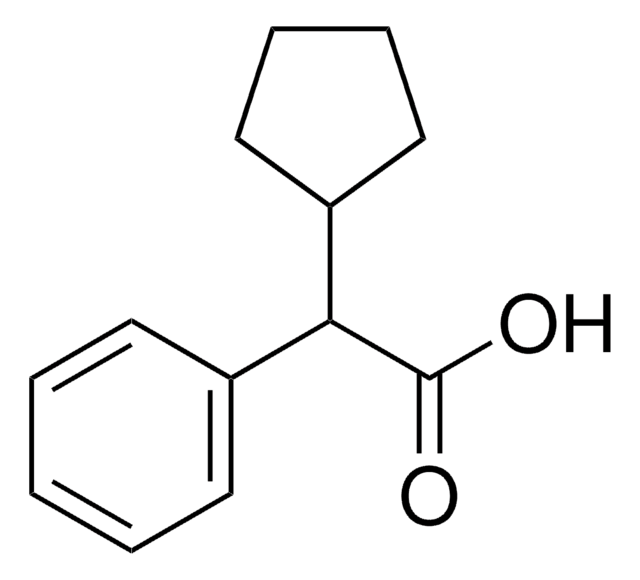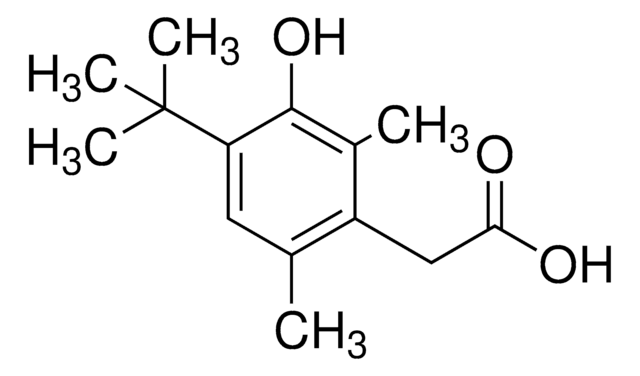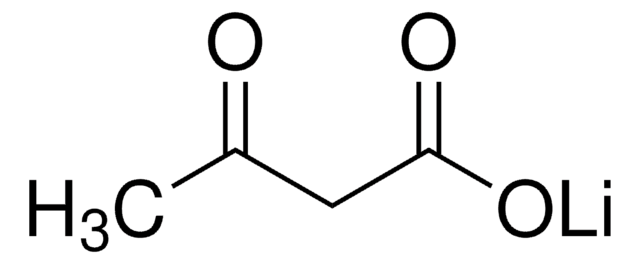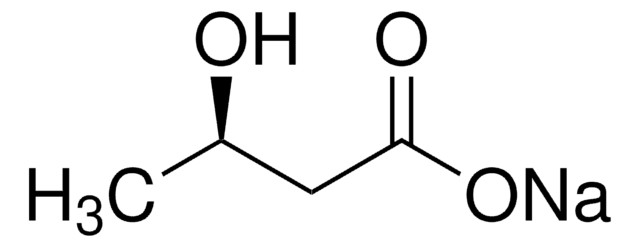36105
(±)-Sodium β-hydroxyisobutyrate
≥96.0%
Synonym(s):
β-Hydroxyisobutyric acid sodium salt, (±)-β-HIBA-Na, 3-Hydroxy-2-methylpropionic acid sodium salt, Sodium 3-hydroxy-2-methylpropionate
About This Item
Recommended Products
Quality Level
assay
≥96.0% (GC)
≥96.0%
form
powder
composition
sodium, 17.5-19.0%
storage temp.
2-8°C
SMILES string
[Na+].CC(CO)C([O-])=O
InChI
1S/C4H8O3.Na/c1-3(2-5)4(6)7;/h3,5H,2H2,1H3,(H,6,7);/q;+1/p-1
InChI key
RBJZIQZDAZLXEK-UHFFFAOYSA-M
1 of 4
This Item | PHR9134 | PHR9093 | PHR9060 |
|---|---|---|---|
| application(s) pharmaceutical | application(s) pharmaceutical small molecule | application(s) pharmaceutical small molecule | application(s) pharmaceutical small molecule |
| grade certified reference material, TraceCERT® | grade certified reference material, TraceCERT® | grade certified reference material, TraceCERT® | grade certified reference material, TraceCERT® |
| product line TraceCERT® | product line TraceCERT® | product line TraceCERT® | product line TraceCERT® |
| shelf life limited shelf life, expiry date on the label | shelf life limited shelf life, expiry date on the label | shelf life limited shelf life, expiry date on the label | shelf life limited shelf life, expiry date on the label |
| manufacturer/tradename Manufactured by: Sigma-Aldrich Production GmbH, Switzerland | manufacturer/tradename Manufactured by: Sigma-Aldrich Production GmbH, Switzerland | manufacturer/tradename Manufactured by: Sigma-Aldrich Production GmbH, Switzerland | manufacturer/tradename Manufactured by: Sigma-Aldrich Production GmbH, Switzerland |
| mp 98-100 °C (lit.) | mp - | mp - | mp ≥300 °C (dec.) |
Application
Biochem/physiol Actions
Packaging
Storage Class
11 - Combustible Solids
wgk_germany
WGK 3
flash_point_f
Not applicable
flash_point_c
Not applicable
Choose from one of the most recent versions:
Already Own This Product?
Find documentation for the products that you have recently purchased in the Document Library.
Customers Also Viewed
Articles
Extracellular matrix proteins such as laminin, collagen, and fibronectin can be used as cell attachment substrates in cell culture.
Protocols
Dilute fibronectin to the desired concentration. Optimum conditions for attachment are dependent on cell type and application. The typical coating concentration is 1 – 5 ug/cm2.Fibronectin coating protocol, products, and FAQs at sigmaaldrich.com
Dilute fibronectin to the desired concentration. Optimum conditions for attachment are dependent on cell type and application. The typical coating concentration is 1 – 5 ug/cm2.Fibronectin coating protocol, products, and FAQs.
This page covers the ECM coating protocols developed for four types of ECMs on Millicell®-CM inserts, Collagen Type 1, Fibronectin, Laminin, and Matrigel.
Our team of scientists has experience in all areas of research including Life Science, Material Science, Chemical Synthesis, Chromatography, Analytical and many others.
Contact Technical Service

